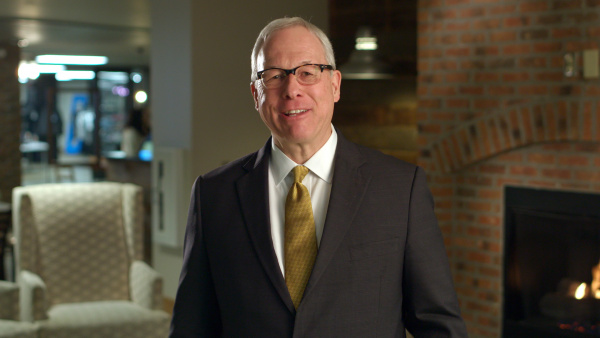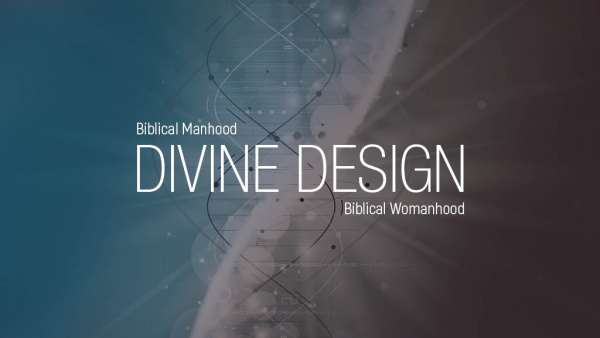Horn: Alright. So, Dr. Pettit, we have a ton of questions that have come in from this incredible series you’re doing called Divine Design. So I’m curious how you feel about that.
Pettit: Well, it’s exactly what I hoped would happen because we knew coming into this series—because the motivation behind the series was actually a lot of conversation with our students. So there was already an interest. And then I knew going into the series it would gender—no pun intended—a lot of questions. And our students are learning. To me, it’s like, it’s what we intended. Questions means that they’re learning. And so they’re listening carefully to the message, and then that’s gonna motivate a lot of questions.
Horn: Well, they’re asking those questions. They’re asking each other. They’re coming and having offline conversations with faculty members, in the dorms, and they actually have a couple of questions for you. So let me give you the first one, and that question I think is an important one because of how you ground the series. And so the question is, as we’ve been talking about Divine Design and the authority of Scripture, how do you see those two playing together?
Pettit: Well, let me go back to really what what I think is the big issue of our series with our students. And it really goes back to the opening line of our creed: “I believe in the inspiration of the Bible, both the Old and the New Testaments.” The issue is, has God spoken? And if God speaks, it’s authoritative. So when Jesus was asked the question about divorce— a real life issue—He did two things. Number one, He said, “Have you not read?” So He anchored His answer in the truth of Scripture. He could have validated and said, “I say unto you.” But He didn’t. He said, “Have you not read?” And then He went back to the very beginning. He went back to Genesis, to creation, to God’s original intent for mankind and how he should live. And so the whole idea of divine design is dealing with men and women, manhood, womanhood, masculinity, femininity and rooting it all in the truth of Scripture. If not, if we don’t do that, then we are
going to base our decisions on human wisdom and human reasoning instead of divine revelation and God’s truth.
Horn: I think one of the most impacting things I heard as you preached a sermon was how Jesus went back. He had His own authority.
He could have spoken with His own words. But He actually pointed us back to the opening chapters of Scripture and said that’s where you’re gonna find your answer. It’s interesting that He introduced this whole thing with relating to a question about marriage. And so the question I think that has come up, and I think many people would have this question, so if I’m not married, how does that fit with this divine design of two image-bearers covenanted together in marriage, and I’m not in a marriage, and I don’t know that I’ll ever be in one. How do I fit in that plan?
Pettit: I say stay tuned. It’s coming down the line. So we have 10 messages, and we’ll have at least one message, maybe two, on singleness and how we are to live today. Because we have 2,500 students, most of which are single, and many of them will be married throughout life, but going forward, how can they best fulfill God’s purpose and plan for them? And we will definitely cover that, and I think it will be very encouraging to our student body.
Horn: Well, I know there’s a lot of interest in that from a lot of people, so we’re looking forward to that part of the series. And I know we’re kind of getting close on our time here, so let me ask one more question I think would would really help a lot of people. So we’re going back to divine design, to Genesis 1 and 2, and obviously immediately we’re going into a scenario where people are in a pre-fallen state. We live on the other side of that, and we’re thankful for the grace that God gives us, but we still live in that post-fall state. So how does the pre-fall design impact us in a post-fall condition? How do we marry those two together?
Pettit: Well, I think that’s a tremendous question because I brought that up in some of the messages and the idea. If you think of it simply this way, that Adam was created by God, all that God made was good, but Adam fell into sin. That’s the Gospel story. And God made a promise to send a second Adam to recover what the first Adam lost. So when Adam sinned in the garden, he lost his spiritual relationship with God. He died and fell into sin. Christ came to resurrect us and give us new life. So Paul tells us that at salvation, we put on the new man which is created in righteousness and true holiness. That brings us back to what Adam had, but even greater than that, our goal is not to become like Adam. Our goal is to become like Christ because God is transforming us into His image who is the man Christ Jesus. So ultimate manhood is found in the person of Jesus Christ. So I mean, it’s just awesome. I’m excited about our students and their engagement and learning, and I believe it’s going to make a difference in the world because I think we’re gonna send out students who have a biblical worldview who will impact every area that they go to in this world.
Horn: Well, thank you, for the courage that you’re exhibiting to preach on this topic.
Pettit: Thank you.
Horn: And I think all of our students and all of us on your team are praying for you and thank you for your willingness to face hard questions and answer them. And so with that, thank you for listening, and we hope that it’ll be a blessing to you.
Download the study guides for the Divine Design chapel series here. If you have a question about the Divine Design chapel series, please submit via the intranet form.







